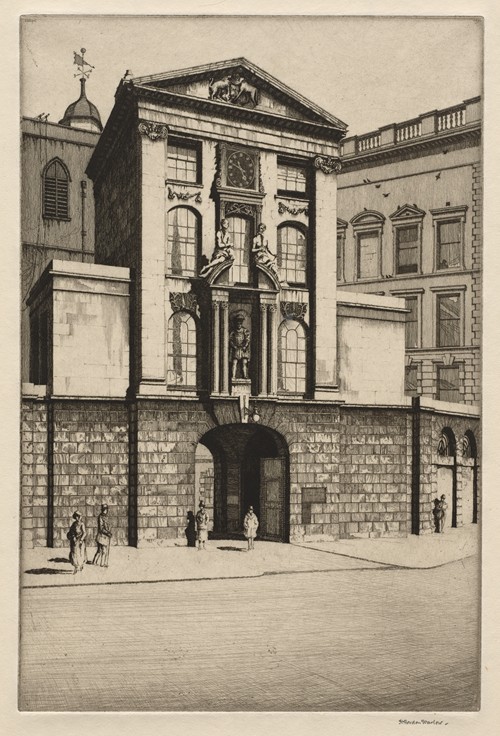
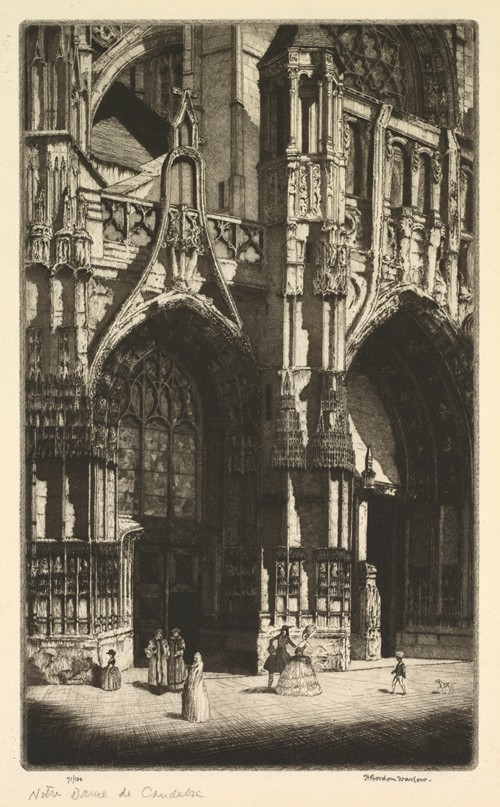
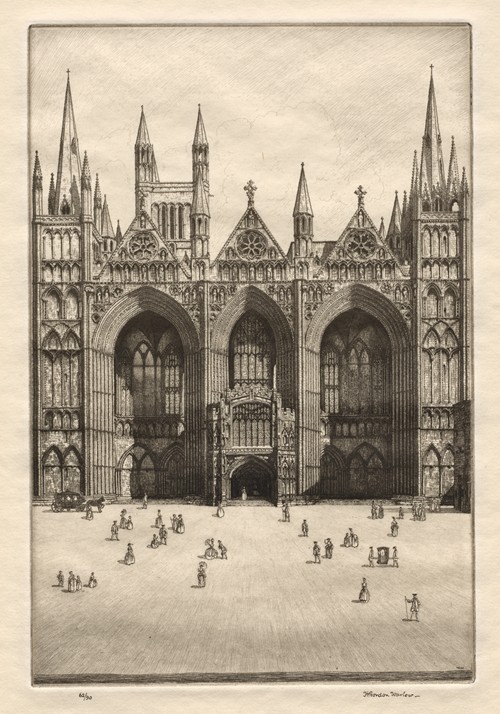
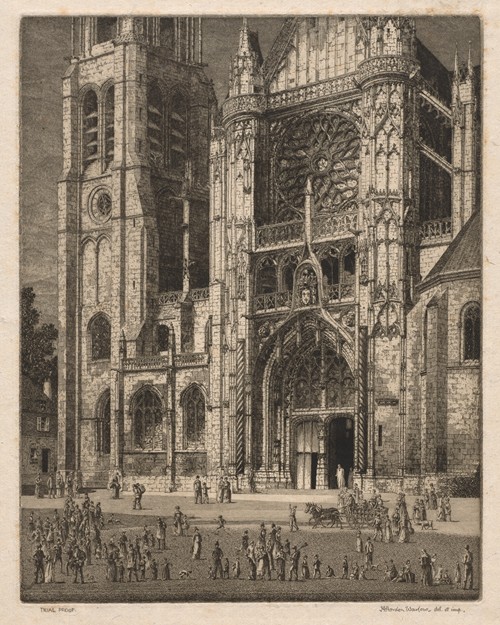
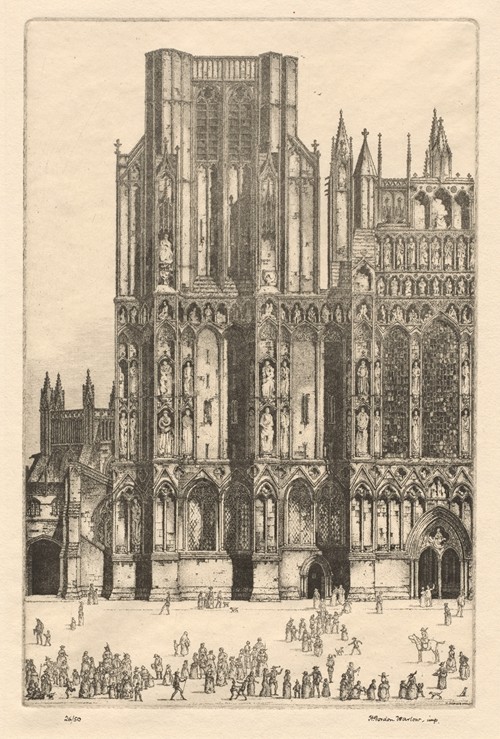
The brilliant, intricate etchings and drypoints of Herbert Gordon Warlow remain unsurpassed in the British school of etchers in the incredible detail of their handling. They display a fastidious care, lavished upon every aspect of their varied architecture, which is without comparison. H.G.Warlow was both a member of the Royal Institute of British Architects and an Associate of the Royal Society of Painter-Etchers and Engravers – the artist’s remarkable printed works are the supreme product of this dual qualification.
Herbert Gordon Warlow was a great admirer of the etched work of Charles Meryon and the somewhat bizarre mediaeval figures which people H.G.Warlow's architectural compositions reflect his admiration of Meryon’s Paris views.




